Pan-genome analysis reveals novel chromosomal markers for multiplex PCR-based specific detection of Bacillus anthracis
- PMID: 39251928
- PMCID: PMC11385494
- DOI: 10.1186/s12879-024-09817-9
Pan-genome analysis reveals novel chromosomal markers for multiplex PCR-based specific detection of Bacillus anthracis
Abstract
Background: Bacillus anthracis is a highly pathogenic bacterium that can cause lethal infection in animals and humans, making it a significant concern as a pathogen and biological agent. Consequently, accurate diagnosis of B. anthracis is critically important for public health. However, the identification of specific marker genes encoded in the B. anthracis chromosome is challenging due to the genetic similarity it shares with B. cereus and B. thuringiensis.
Methods: The complete genomes of B. anthracis, B. cereus, B. thuringiensis, and B. weihenstephanensis were de novo annotated with Prokka, and these annotations were used by Roary to produce the pan-genome. B. anthracis exclusive genes were identified by Perl script, and their specificity was examined by nucleotide BLAST search. A local BLAST alignment was performed to confirm the presence of the identified genes across various B. anthracis strains. Multiplex polymerase chain reactions (PCR) were established based on the identified genes.
Result: The distribution of genes among 151 whole-genome sequences exhibited three distinct major patterns, depending on the bacterial species and strains. Further comparative analysis between the three groups uncovered thirty chromosome-encoded genes exclusively present in B. anthracis strains. Of these, twenty were found in known lambda prophage regions, and ten were in previously undefined region of the chromosome. We established three distinct multiplex PCRs for the specific detection of B. anthracis by utilizing three of the identified genes, BA1698, BA5354, and BA5361.
Conclusion: The study identified thirty chromosome-encoded genes specific to B. anthracis, encompassing previously described genes in known lambda prophage regions and nine newly discovered genes from an undefined gene region to the best of our knowledge. Three multiplex PCR assays offer an accurate and reliable alternative method for detecting B. anthracis. Furthermore, these genetic markers have value in anthrax vaccine development, and understanding the pathogenicity of B. anthracis.
Keywords: Bacillus anthracis; Anthrax; PCR; Pan-genome; Specific genes.
© 2024. The Author(s).
Conflict of interest statement
The authors declare no competing interests.
Figures
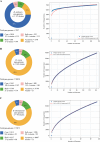



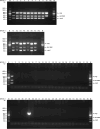
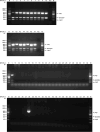
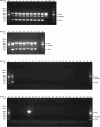
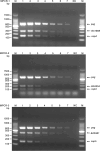
References
MeSH terms
Substances
Grants and funding
- 23K19460/Japan Society for the Promotion of Science (JSPS) under Grants-in-Aid for Scientific Research (KAKENHI)
- 21K15430/Japan Society for the Promotion of Science (JSPS) under Grants-in-Aid for Scientific Research (KAKENHI)
- 18K19436/Japan Society for the Promotion of Science (JSPS) under Grants-in-Aid for Scientific Research (KAKENHI)
- JP23wm0125008/The Japan Program for Infectious Diseases Research and Infrastructure (JIDRI) from the Japan Agency for Medical Research and Development (AMED)
LinkOut - more resources
Full Text Sources
Research Materials

